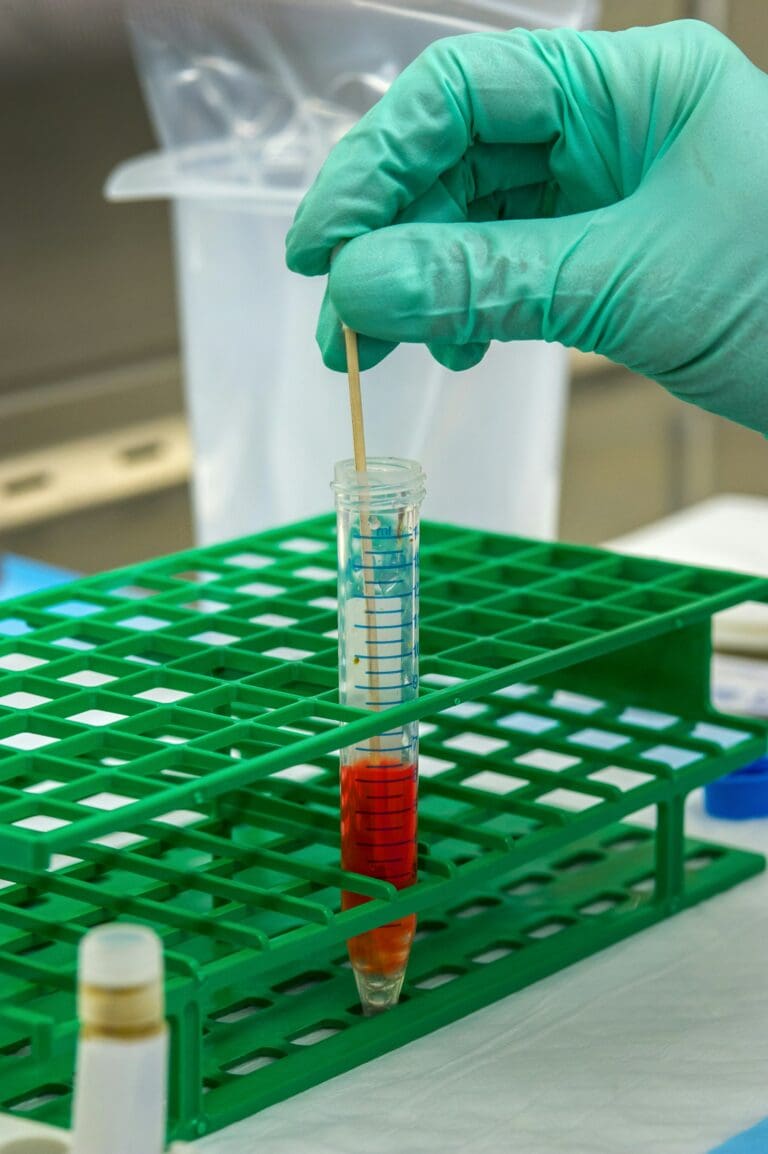Introduction
In the midst of the COVID-19 pandemic, PCR testing has become a crucial tool in diagnosing the virus. Polymerase Chain Reaction (PCR) testing is a widely used molecular technique that detects the presence of genetic material from the SARS-CoV-2 virus. This article aims to provide a comprehensive understanding of PCR testing, how it works, and why it is considered a reliable method for COVID-19 diagnosis.
The Basics of PCR Testing
PCR testing involves several key steps that allow for the amplification and detection of specific DNA or RNA sequences. The process begins with the collection of a respiratory sample, usually obtained through a nasal or throat swab. The collected sample is then processed in a laboratory, where the PCR testing takes place.
Once in the laboratory, the sample undergoes a series of steps to prepare it for PCR testing. This includes extracting the genetic material, whether it is DNA or RNA, from the sample. The extracted genetic material is then mixed with the necessary reagents, including primers and enzymes, to initiate the PCR reaction.
Amplification through Thermal Cycling
PCR testing utilizes a technique called thermal cycling to amplify the viral genetic material. The sample undergoes a series of heating and cooling cycles, which allows for the specific replication of the target DNA or RNA sequences. This amplification process enables the detection of even small amounts of the virus in the sample.
During the heating phase of thermal cycling, the DNA strands in the sample denature, or separate, into single strands. This creates an opportunity for the primers to bind to the target sequences in the viral genetic material. The primers are designed to be complementary to the target sequences, allowing them to attach specifically to the desired regions.
Once the primers are bound, the sample undergoes a cooling phase. During this phase, the temperature is lowered, allowing the primers to anneal, or attach, to the target sequences. This step is crucial for the subsequent replication process.
The final phase of thermal cycling is the extension phase. During this phase, the temperature is raised again, and the DNA polymerase enzyme extends the primers, synthesizing new DNA strands that are complementary to the target sequences. This process is repeated multiple times, resulting in the exponential amplification of the target DNA or RNA sequences.
Targeting Specific Genes
PCR testing relies on the selection of specific genes within the SARS-CoV-2 virus for detection. These genes, such as the N gene or the E gene, are known to be highly conserved and specific to the virus. By targeting these genes, PCR testing can accurately identify the presence of the SARS-CoV-2 virus in a patient’s sample.
The selection of specific genes for PCR testing is based on extensive research and understanding of the SARS-CoV-2 virus. Scientists have identified regions in the viral genome that are unique to the virus or are highly conserved across different strains. These regions serve as targets for the primers used in PCR testing.
The choice of target genes is crucial for the accuracy and reliability of PCR testing. By selecting genes that are specific to the SARS-CoV-2 virus, PCR testing can differentiate it from other similar viruses or genetic material that may be present in the sample. This specificity ensures that the test results are highly accurate and reliable.
The Role of Primers
Primers play a crucial role in PCR testing. These short DNA sequences are designed to bind to the targeted viral genes and act as starting points for the replication process. By using specific primers, PCR testing ensures that only the desired genetic material is amplified, enhancing the accuracy and reliability of the test.
The design of primers is a critical step in PCR testing. Scientists carefully select primers that are complementary to the target sequences and have a high affinity for binding. This ensures that the primers specifically attach to the viral genetic material and initiate the replication process.
During thermal cycling, the primers serve as the starting points for DNA synthesis. The DNA polymerase enzyme extends the primers, synthesizing new DNA strands that are complementary to the target sequences. As the thermal cycles progress, the number of DNA copies increases exponentially, resulting in the amplification of the target genes.
The use of specific primers contributes to the accuracy and reliability of PCR testing. By targeting specific genes within the SARS-CoV-2 virus, PCR testing can distinguish it from other genetic material or contaminants that may be present in the sample. This specificity ensures that the test results are highly accurate and reliable.
Detection and Analysis
After the amplification process, the PCR test result is determined through various detection methods. One common approach is the use of fluorescent probes that bind to the replicated DNA or RNA sequences. This binding generates a detectable signal, indicating the presence of the virus. Advanced instruments and software analyze these signals to provide accurate and reliable results.
Fluorescent probes used in PCR testing are labeled with fluorescent dyes. These dyes emit a specific wavelength of light when excited by a light source. During the detection phase, the fluorescent probes bind to the replicated DNA or RNA sequences that were amplified during thermal cycling.
When the fluorescent probes bind to the target sequences, they emit a detectable signal, which can be captured by specialized instruments. These instruments measure the intensity of the emitted light, providing information about the presence and quantity of the viral genetic material in the sample.
Advanced software is used to analyze the signals generated by the fluorescent probes. The software compares the signal intensity to predefined thresholds, determining whether the test result is positive or negative. Additionally, the software can quantify the amount of viral genetic material present in the sample, providing valuable information about the viral load.
The combination of fluorescent probes, specialized instruments, and software analysis ensures accurate and reliable results in PCR testing. These tools allow for the detection and quantification of the viral genetic material, providing crucial information for diagnosing COVID-19.
Reliability of PCR Testing
PCR testing has been widely recognized for its reliability in diagnosing COVID-19. Its high sensitivity allows for the detection of even low viral loads, making it effective in identifying infected individuals, including those who may be asymptomatic. Additionally, the specificity of PCR testing ensures that false-positive results are minimized, providing confidence in the accuracy of the test outcomes.
The sensitivity of PCR testing refers to its ability to detect even small amounts of the viral genetic material. This is crucial for diagnosing COVID-19, as individuals with low viral loads can still transmit the virus to others. PCR testing can identify these individuals and help prevent further spread of the virus.
The specificity of PCR testing refers to its ability to accurately identify the SARS-CoV-2 virus and distinguish it from other genetic material or contaminants. By targeting specific genes within the virus, PCR testing ensures that the test results are highly accurate and reliable.
False-positive results, where the test incorrectly identifies the presence of the virus, can have serious consequences. They can lead to unnecessary isolation, anxiety, and resource allocation for individuals who are not infected. PCR testing minimizes the occurrence of false positives, providing confidence in the accuracy of the test outcomes.
Conclusion
PCR testing is a powerful tool in the fight against COVID-19. Its ability to detect the presence of the SARS-CoV-2 virus with high sensitivity and accuracy makes it an essential component of diagnostic strategies. Understanding the basics of PCR testing, from the amplification process to the role of primers and detection methods, helps to appreciate why it is considered a reliable method for diagnosing COVID-19. Remember, timely and accurate testing plays a crucial role in controlling the spread of the virus and protecting public health.

